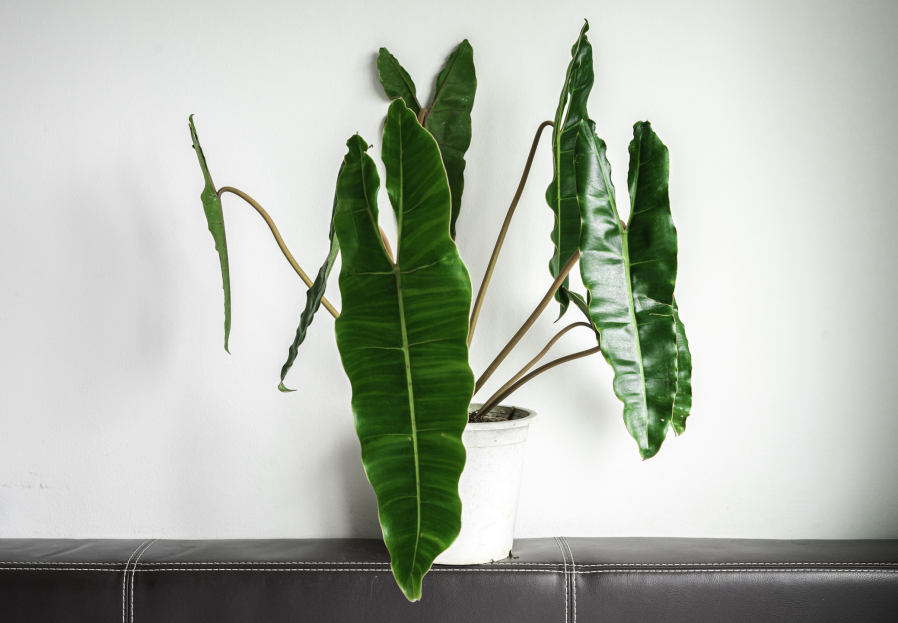
Philodendron billietiae is a true statement plant. Known for its elongated, glossy leaves and vivid orange petioles, this rare beauty adds a bold, tropical flair to any indoor jungle. Native to the rainforests of South America, it combines eye-catching aesthetics with relatively easy care, making it a favorite among houseplant enthusiasts.
Philodendron billietiae thrives in bright, indirect light. Position it near a window with filtered sunlight to help maintain its signature orange stems and encourage steady growth. It can tolerate lower light levels, but you may notice slower development and duller colors. Avoid direct sunlight, which can scorch the delicate leaves.
Let the soil dry out slightly between waterings. A good rule of thumb is to water when the top 1–2 inches of soil feel dry. In spring and summer, this might mean watering every 7–10 days; during fall and winter, reduce frequency as the plant’s growth slows. Always use a pot with proper drainage to avoid root rot.
As a tropical species, billietiae loves humidity. Aim for at least 50% humidity, though 60% or higher is ideal. Use a humidifier, mist the leaves, or set the pot on a pebble tray with water to boost moisture in the air. Keep temperatures between 65–80°F (18–27°C), and avoid exposing the plant to drafts or temps below 55°F (13°C).
Choose a well-draining, airy soil mix rich in organic matter. A blend of potting soil, perlite, orchid bark, and a bit of charcoal creates ideal conditions. Repot every 1–2 years, preferably in spring, or when you notice roots growing through the drainage holes.
Feed your Philodendron billietiae a balanced liquid houseplant fertilizer diluted to half strength every 4–6 weeks during the growing season. Skip feeding during the dormant winter months to avoid over-fertilization.
This plant is relatively low-maintenance. Remove any yellowing or damaged leaves to keep it looking its best. If the plant gets leggy, prune just above a node to encourage bushier growth.
Propagation is easy via stem cuttings. Cut just below a node, then place the cutting in water or moist soil. Roots should begin to form within a few weeks. The best time to propagate your Philodendron is in spring or early summer when the plant is actively growing.
Like most philodendrons, billietiae contains calcium oxalate crystals, which are toxic to pets if ingested. Be sure to keep it out of reach of curious cats and dogs.